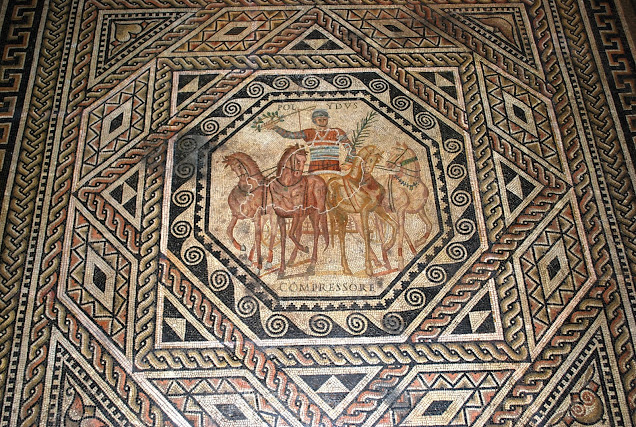Gades or Cádiz
The ancient theatre of Cádiz is located on the road along the boulevard, but the entrance is hidden in a side street on the city side. As soon as you enter you will be surprised by beautifully displayed remains and information boards about its history. A corridor brings you to the theater.
The city was known as Augusta Urbs Iulia Gaditana when it became a Roman colony, but its primary Latin name in historical and literary sources is Gades. It was built on the old Phoenician predecessor called Gadir.
The theater with a capacity of nearly 20,000 spectators was built during the late Republic, located in new town on island Kotinoussa. Here, I present the texts on display in the museum, which gives a great insight in its history.
The theater was built 'in montibus', taking advantage of the slope of the land to support the stands, whilst modifying it where needed. Architecturally the building stands out for its dimensions, given that the diameter of 118 meters, or 400 pedes, which span its semicircular floor, mean that it can be compared to the biggest theaters in the western world, being the second largest of Hispania.
Additionally, the theater is characterized by having a ring-shaped vaulted gallery running below the stands. The purpose of this level of internal circulation of which more that 75 meters has been preserved, was to provide the ranks of knights - the ordo equestrian - with an exclusive access to their seats in the ima cave, thus highlighting the strong social divisions in the Roman world: "discrimina ordinum".
The theater was erected around 70 BC by Lucius Cornelius Balbus (the Elder), a prominent native of Gades of semitic origin. He was a friend of both Pompey, from who he received Roman citizenship along with his relatives, and even more staunchly of Caesar, whom he served loyally. His nephew, the so-called Balbus the Younger, aligned with him in funding the construction. He enjoyed an important civil and military career, culminating in the proconsulship of Africa and being the first non-Italian born 'provincial' to obtain the honors of victory.
He sought to attract the popular backing of his fellow citizens with initiatives which strengthen his image. As an example is given in 43 BC, when he attended the celebration in Gades of the theatrical ludi, in the building erected by himself and his uncle. And he made a show of it..... (keep on reading).
Maybe nice to remember: Balbus the Younger also financed the building of the third theater in Rome, which was inaugurated in 13 BC. According to Pliny the Elder, it was decorated lavishly.
Some insights from Cicero's correspondence (Epistulae ad Familiares, X, 32)
Gaius Asinius Pollio. governor of Hispania Superior and distinguished orator and poet, wrote to Cicero the following letter:
"The questor Balbus, with a large sum of money, a large quantity of gold and an even larger quantity of silver, taken form public funds, left Gades without even paying the stipend to the soldiers and, held up for three days in Calpe, because of a storm, proceeded to the kingdom of Bogud, loaded with money. I don't know if he will return to Gades or go to Rome, since he is a wretched individual who changes his ideas depending on whatever he hears. Dodging the abuses and cruelties which he commits with his allies, those against whom he uses sticks, I'll tell what he's done, bragging about copying Caesar. During the games which were held in Gades, on the last days of the festivities, he gave the knight's ring of gold to the comedic actor Herennio Galo, as a present, and made him sit in stand fourteen, where all those rows had been reserved for the order of the knights....".
The theater was part of a larger plan, including an amphitheater, designed for civic and cultural gathering.
The site has a classic horseshoe-shaped auditorium with parabolic tiered seating, cut from the natural rock and sloped to facilitate large crowds. A vaulted distribution gallery, concealed beneath the seating, allowed easy movement for spectators. The outer facade was constructed from finely cut ashlar stone, giving it a monumental appearance. Parts of the stage and portico - its most monumental elements - remain unexcavated under the El Pópulo building.
Unfortunately, there is not sufficient information to allow a reconstruction of the stage structure of the theater, only the position of the podium, with the stage of the Orange theater helping to reflect how it might have been.
More pictures of Gades you can find here!







Reacties
Een reactie posten